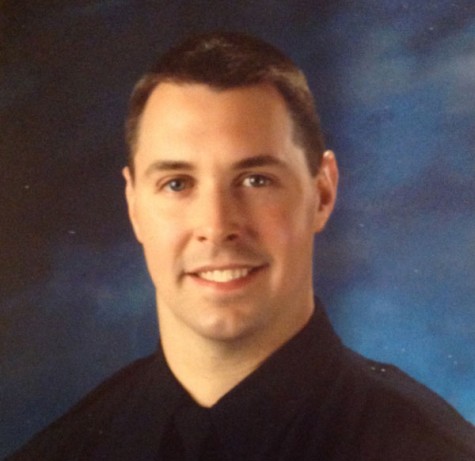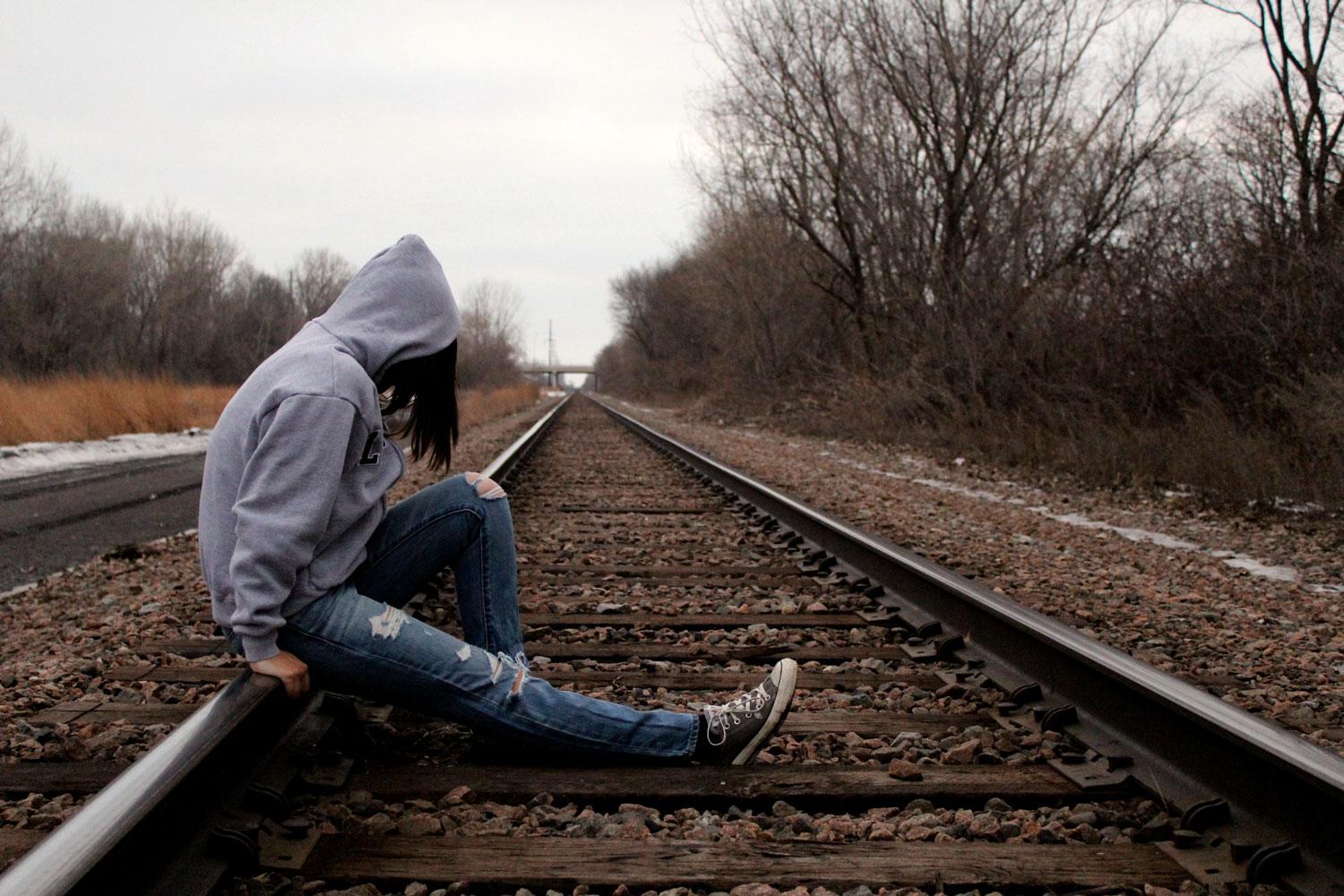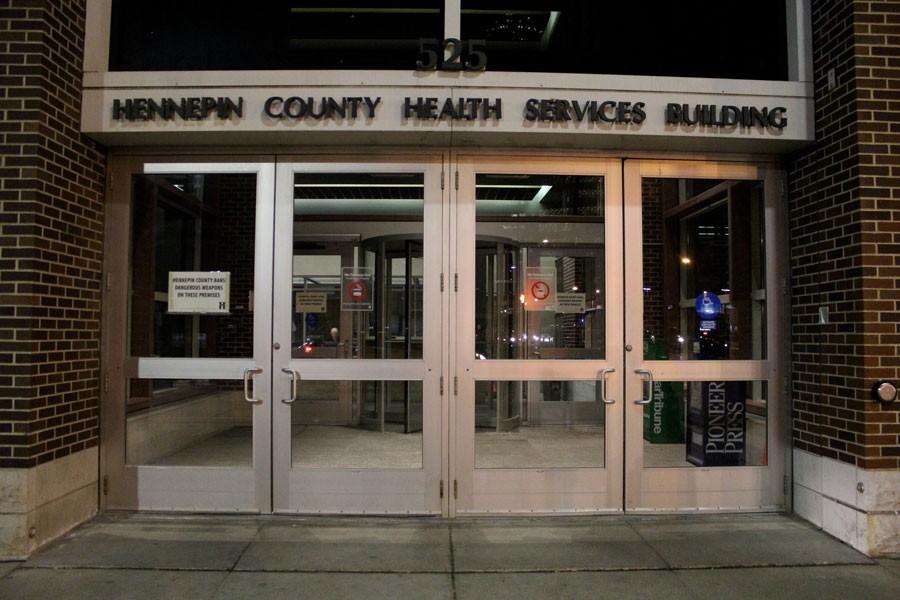Child abuse: An exploration of society, systems, and survivors
February 4, 2015
Roxy Foster grew up in the suburbs with her mother, stepfather, and brother, but she did not live a typical life. Caught in a cycle where every day was new and unpredictable, she grew up having to protect herself and her family while she lived in fear that her own stepfather might turn on them in the blink of an eye.
For 10 years, her stepfather abused her sexually, physically, and emotionally, but today Foster is a mother, an employee for Minnesota Communities Caring for Children and works to prevent child abuse across the state; Roxy Foster is a child abuse survivor.
Last year in Hennepin County, over 15,000 child abuse or neglect reports were filed.
Last year over 68,000 reports of child abuse were filed in Minnesota. The things that cause someone to abuse a child are varied and hard to pinpoint. “It’s a combination of many things. It could include alcohol or drugs or mental health issues, maybe mental illness. There are many contributing factors that are the reasons the kids are abused,” Joan Countryman, who works with survivors of child abuse nearly everyday, said.
Mental health issues and addiction complicate child abuse cases even further, making it difficult to bring families back together and functioning again. “Mental health issues, drug issues, alcohol issues, and dependency issues are ongoing issues they have to learn how to handle,” Robertson said.
Last year in Hennepin County, over 15,000 child abuse or neglect reports were filed. Determining whether those each of those 15,000 cases is at high risk and needs further investigation is extremely challenging and complicated.
Every county and task force devises plans to get the family in a situation that is the best for the children involved. With the vast number of cases, however, obstacles like addictions, funding, and finding the right policy arise.
Changing the mentality and the way society functions isn’t something easily changed, or something changed quickly, but survivors are in desperate need of aid today. That is where organizations such as The Bridge for Youth become crucial in guiding child abuse survivors.
The Bridge for Youth in Minneapolis provides counseling and a shelter for youths between the age of 10-17 in crisis. Working with the child and the family, they try to figure out the best solutions for all parties involved. “We work with all kids in crisis, and they get to define what their crisis is. Sometimes it’s a problem with the court system and they have gotten themselves in trouble. Sometimes it’s trouble with family members, and sometimes that does involve experiencing abuse,” Countryman, a Bridge for Youth employee, said.
Once a report has been made, The Bridge stays in contact and counsels the survivors if they believe their programs and services are well suited for the individual. Their main goals are to help these youth understand they have a place to be safe and to give them tools to use in their own lives. “We work with child protection to make sure it’s safe to go home, they are finding a different place for the youth to go, or if we are exploring other options and places for the youth to go,” Countryman said.
A Multistep Process
Each county has similar guidelines, but depending on the political climate, population, and funding, different counties have different levels of dedication to child protection. Because of the sheer number of reports the county may receive on any given day, employees can be swamped with potential cases that need to undergo a multistep process. “A report comes in. Then we have staff that are screeners that for the most part read reports or take phone calls and decide if it meets the screening criteria. So once the screener makes the decision, it gets assigned for assessment or investigation,” Robertson said.
When a report gets assigned for an investigation, it can go down two main tracks: traditional or family assignment. A social worker or a team will be assigned to a case and help the family develop programs or tracks that best fit the family. One of the two tracks a case could go through is the traditional track. “The traditional track is for the most serious cases such as sex abuse cases or real egregious physical abuse cases,” Robertson said.
Family assignment, the second of the two tracks, is for less urgent cases. Robertson says these cases are more common but are not often covered by the media. “Most cases take the track of the family assessment. The social worker goes out and meets with the mom and dad, or whoever’s in the family, and the kids at the home, and they try to figure if it’s a valid report,” Robertson, said.
Emergency situations range from neglect to physical abuse and sexual abuse. When there is an emergency situation, social workers and police officers must take immediate action. They have to be prepared to enter high stress situations and diffuse the existing tension long enough to halt the crisis until social services arrive. In some child abuse cases, however, there may be no intense violence happening, but it is still crucial the children be removed immediately.
Derek Johnson is a police officer in North Dakota, where, similar to Minnesota, city police officers are called to investigate emergency child abuse reports. He was called to a house and executed an emergency evacuation of three children under the age of 7. “Last Christmas we got called to a house, and it was a neighbor that said she suspected there were three kids left alone in a house. She suspected the mom had not been there for a day or two,” Johnson said.
Upon entering the house, Officer Johnson saw a situation that became more critical than he was expecting. “After several minutes, I ended up finding a little girl. I was trying to talk to her, and she told me that her brother and sister were also in the house. She hid the 3-year-old under the stairs in the basement. The infant she hid a dresser drawer,” Johnson said.

I ended up finding a little girl. I was trying to talk to her, and she told me that her brother and sister were also in the house. She hid the 3-year-old under the stairs in the basement. The infant she hid a dresser drawer.
— Officer Derek Johnson
The seven-year-old had hidden her sister and her infant brother because her mother had instructed her to hide if the police came to the house. “Her mom had always told the kids that if the cops come they are coming to take you away. So when she saw the cop cars, she assumed we were coming to take them away,” Johnson said.
Most states have a system in which the state makes the laws and each county follows. However, Minnesota is different. “We are state-administered, county-operated. So that means the state makes the rules and each county gets to interpret those rules and implement them in their own way,” Penny L. Robertson, a screening supervisor in Hennepin County, said.
Case plans allow some families to work with a social worker in an attempt to resolve the issues that brought the social workers to the house in the first place. “A case plan is usually written with the family. Here’s our safety concerns. Here’s what we think, what do you think?” Robertson, who has been a screening supervisor for seven years, said.
Although the case plans are voluntary, they can arrange opportunities for the families involved to become a unit that functions better than before. With over 15,000 reports in a year, not every genuine report the county gets can be fully investigated and given a legitimate case plan on the budget they receive. “I certainly think there can be more money that goes toward child protection to investigate and put those support pieces in place for families. I do think there are just to few resources,” Countryman said
Another part of the solution is to help the survivors build skills to cope with their experiences by providing services and counseling even after a case has been filed, or after the youth has left the shelter. The Bridge for Youth understands that youth may need help beyond the 90-day limit they are legally allowed to let youth to stay at the shelter. “We do have some after care support groups kids can go to. We have a boys’ groups, and a girls’ group. We also have a group called ‘So What if I Am?’ for LGBTQ youth. And we offer ongoing counseling, individual or family,” Countryman said.
Before The Bridge is able to start a counseling program or a support group for a survivor, they must understand the child’s perspective of what is happening in their life. “We work with the kids individually and supportively to talk through what happened. We ask if they have any physical marks and just take note of that where any marks might be and document their point of view of their experience,” Countryman said.
Other organizations like Minnesota Communities Caring for Children work to prevent child abuse by educating parents so that they can become empowered leaders in their community. They create parent support groups, raise awareness, and educate communities statewide on child abuse and how it affects people. Their mission as stated on their website is to “empower individuals and communities to stop child abuse and neglect before it starts through education, advocacy, and family support.”
Concealing emotions for years created issues that Foster wanted to prevent and counteract. Foster realized that to progress through her past, she would need support and assistance. “I spent seven years in a program called Early Childhood Family Education, and without that, I don’t think I would be as successful as I am as a parent or have to job I have today,” Foster said.
While these organizations are vital to raising awareness of and helping survivors of child abuse, Hennepin County also offers survivors a chance to improve their family situations though the dedicated child protection and social workers in the county.
One Outcome
In some cases the family won’t be able to stay together anymore because the guardian can’t contain the problem well enough to keep caring for their children. “The reality is there are cases when we see the same family over and over again. When that happens too many times, that’s when the case may go a different direction and go to a permanency track,” Robertson said.
Breaking up families affects each and every person involved and requires each person to develop their own way to cope with their experiences. “Let’s say a sibling group goes through the same family. They experience the same incident and the same trauma. It may affect one child for their whole life and the other child, it doesn’t even faze them,” Robertson said.
Finding a family member to care for children who can’t return to their original home caries complications. “First, we have to find them, [and] then we have to meet with them and see if it something they want to do. And the next piece, which is very challenging, is the home has to be licensed, and there is a whole set of laws on what it takes to get a family licensed,” Robertson said.
While Officer Johnson was at the house on Christmas, they ran into the issue of space. There were no temporary homes for the three children to spend the night, and no relative could be contacted. “We didn’t know where Grandma and Grandpa were, so we ended up having to call social services to do an emergency placement of the kids. The social services worker couldn’t find any overnight foster parents because it was Christmas day.. So she ended up taking them to her house,” Johnson said.
When Officer Johnson removed the children from the home, the kids couldn’t help but feel scared and concerned about their situation. “All her worst fears her mother had warned her about now were coming true. That part was hard for me. We had become friends, and now I felt like I had lied to her because I told her we weren’t here to hurt [her]. Obviously a seven-year-old doesn’t understand they have to be taken away,” Johnson said.
Once the officers were able to get the 7-year-old girl to calm down and explain the situation she was in, she told the officers this wasn’t the first time she was left unattended. “She said her mom was gone seeing friends. Then she told me this happens very frequently,” Johnson said.
The girl didn’t know what day it was or how many days her mom had been away. So to get an idea of the extent of time her mother was missing she counted ‘sleeps.’ “She said one sleep so I was thinking one whole day and one whole night, and now I was there so it was two days home alone. And this seven-year-old had been taking care of the kids,” Johnson said.
The Fight Continues
In the mid 60s, there was little to no recognition or help for abused women and children outside the city even from local police. “When the police would arrive and the house was a mess and my mom was bleeding, they would say, ‘Oh, you know you just need to calm down and control your anger,’” Foster said.
“Life or death situations invoke survival instincts naturally ingrained in the human brain. We have a natural response that sits in our amygdala, that when we are faced with a dangerous situation we either fight, flight, or freeze. My response was always to fight,” Foster said.

I would hit him with a frying pan or a broom––whatever I could do to loosen his grip on her. Then, I would run like hell because he was after me.
— Roxy Foster
When Foster watched her mother being suffocated to the brink of death, it triggered evolutionary actions. “I would hit him with a frying pan or a broom––whatever I could do to loosen his grip on her. Then, I would run like hell because he was after me,” Foster said.
After years of fighting for their lives, Foster, her brother, and mom moved to the city. Despite desperately trying to keep him in the past, Foster’s stepfather was never far behind, especially for Foster’s mother. “When he started to batter my mom after we were gone, by that time I was connected with some inner city people and characters who did illegal things, I would have them go out and slash his tires and slash the top of his convertible,” Foster said.
Although Foster’s stepfather was physically out of her life, the emotional complications that lingered behind left Foster, as it does for many survivors, confused as to where to turn to next. “Emotional abuse is the hardest to define because it is so deep. A lot of survivors have survived because they buried it and have suppressed it,” Foster said.
For years, Roxy Foster was abused and oppressed at home, and she had to continue to fight for her mother’s wellbeing years later. Foster’s fight response and resilience may have just saved her and her family’s lives. Foster’s willingness to work through her problems and refusing to give into the darkness of her past created a new and more successful life.


